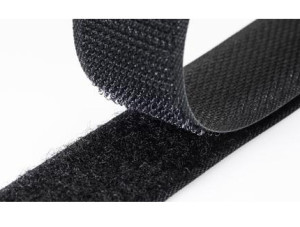
Velcro is the brainchild of Swiss electrical engineer George de Mestral who in 1941 went for a walk in the woods and wondered if the burrs that clung to his trousers — and dog — could be turned into something useful.[1] The original patented hook and loop fastener was invented in 1948 by de Mestral, who patented it in 1955 and subsequently refined and developed its practical manufacture until its commercial introduction in the late 1950s. De Mestral developed a fastener that consisted of two components: a lineal fabric strip with tiny hooks that could “mate” with another fabric strip with smaller loops, attaching temporarily, until pulled apart.[2] Initially made of cotton, which proved impractical,[3] the fastener was eventually constructed with nylon and polyester.[4]
A few years after its 1948 invention and early-1950s patent, Velcro’s use spread to the show floor. Gone were pricked fingers and ripped graphics. “You could use Velcro any time you needed a temporary bond,” says Chris Wendel, principal of ChrisWendel Inc. in Westfield, NJ. “It was easy to use, and didn’t require any special labor or expertise.”Velcro did more than act as makeshift mortar. It saved exhibitors costs, labor, and materials. It eliminated traditional fastening systems such as nails and screws, allowed for the hidden fastening of overlays, and made it easy to reposition graphics. Panels, for example, were expensive if exhibitors had to reposition them using traditional materials that called for extra labor.
Velcro — later joined by tension fabrics and portable exhibits — made booths less stuck in the limitations of the past.
Sources: http://www.exhibitoronline.com/exhibitormagazine/article.asp?ID=1199
Sources: https://en.wikipedia.org/wiki/Velcro






